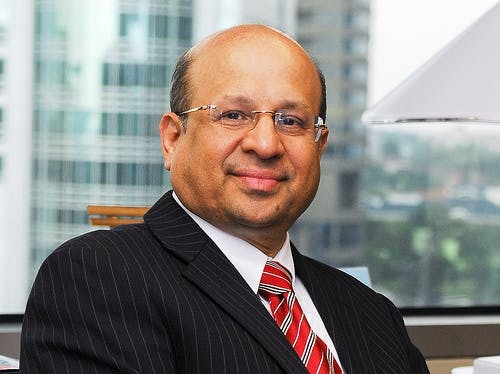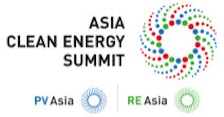The fossil fuel industry suffered major blows to both its reputation and coffers at last month’s United Nations Climate Summit when more than 400,000 people marched in New York City demanding a shift to a low-carbon economy, and several investors, including the Rockefeller Brothers Fund, pledged to withdraw more than US$50 billion from investments in fossil fuels.
At the summit, a group of 348 investors with assets totalling more than US$24 trillion also made a pledge to increase investments in renewable energy as a part of the Global Investor Statement on Climate Change, which also called on governments to reach a global climate change agreement by the end of 2015.
This statement on how investors could contribute to low carbon and climate resilient investments was coordinated by six organisations including Investor Groups on Climate Change from Asia and Australia/New Zealand, the CERES Investor Network on Climate Risk, and the United Nations Environment Programme Finance Initiative, among others.
This growing global momentum to transit to clean energy is significant for Asia, which faces the unenviable “energy trilemma”: having to meet the energy needs of its growing population, doing so in a way that national and household budgets can afford, and ensuring that growing energy supply does not compromise on sustainability.
Energy demand is projected to more than double by 2035 in the region due to economic and population growth. Currently, the International Energy Agency (IEA) estimates that more than 600 million people in Asia live without electricity.
The region remains heavily reliant on fossil fuels: Over the next two decades, coal use in Asia is expected to increase by 81 per cent, while oil consumption doubles, and natural gas consumption more than triples, according to the Asian Development Bank (ADB). This will also double Asia’s energy-related carbon emissions and cause the region’s air quality and water security to deteriorate.
K Sadashiv, head of management consultancy EY’s Climate Change and Sustainability Services discipline, tells Eco-Business that governments in Asia cannot afford to ignore the external consequences of economic growth. “It is unlikely that Asia’s fossil fuel consumption will be reduced in absolute terms, but reducing the region’s per capita intensity should be pursued,” he says.

Bindu Lohani, vice-president for Knowledge Management and Sustainable Development, ADB. Image: ADB
To help resolve this trilemma, ADB’s vice president for knowledge management and sustainable development Bindu Lohani suggests a two-pronged “clean energy” approach - supporting the development and deployment of renewable energy while emphasising energy efficiency.
Cleaner energy for Asia
Renewable energy has made inroads into the region, with individual countries setting renewable energy adoption targets, and creating incentive schemes and policy measures.
China has led the way, with a target of supplying 15 per cent of its primary energy needs with renewables by 2020, up from 12 per cent in 2009. To that end, it spent US$56.3 billion on wind, solar and other renewable projects last year, according to a recent report by the Renewable Energy Policy Network. This included the installation of more than 12,600 megawatts (MW) of grid-connected solar projects last year.
Having reached its 2020 target of having 2000 MW installed solar capacity in 2013, Thailand now plans to achieve a total installed capacity of 3000 MW on its rooftops by 2016. Like Malaysia, which aims to increase it renewable electricity capacity to 11 per cent of total electricity generated by 2030, Thailand also provides a “feed-in-tariff scheme” to support renewable energy projects.
In both countries, renewable electricity producers are guaranteed favourable prices for the electricity they provide to the grid, which offsets the higher initial investment required to produce renewable energy. This reduces the risk of investing in such projects.
In India, both the government and private sector have driven projects to install 21,700 MW of wind and 2800 MW of solar-generating capacity. To contribute to the Indian National Action Plan on Climate Change, which aims for 15 per cent of India’s energy to be supplied from renewable sources by 2020, each of the 29 Indian states is also required to have a certain percentage of renewable energy in their electricity mix – this target varies according to the state.
And in Singapore, the government is leading the way in creating demand for solar projects in Singapore through the SolarNova programme, an initiative that aims to accelerate the uptake of solar technology in Singapore by having public agencies procure PV installations across government buildings and spaces. Under SolarNova, the government has committed to installing 350 MW of solar power by 2020. This is a significant increase from Singapore’s present installed solar capacity which was 20MW in 2013, according to the Sustainable Energy Association of Singapore (SEAS).
In addition to national efforts, ADB also has a mandate to tackle energy poverty in the region. To this end, ADB set up the “‘Energy for All Partnership’ in 2008, an initiative that brings governments, donor organisations and companies together to provide communities with access to reliable and clean forms of energy, such as solar, wind, and biogas. The partnership aims to bring energy access to 100 milllion people by 2015, and has done so for 78 million beneficiaries to date.
According to ADB’s 2013 Energy Outlook for Asia and the Pacific report, these various initiatives by governments and international organisations in Asia today could bring the share of renewable energy in the region’s power generation mix to 7.1 per cent by 2035.
This figure could potentially double to 5.8 per cent by 2035 if policymakers and businesses pursue renewables more aggressively with supportive policies and incentives for private development, the report suggests.
Challenges ahead
Experts from Asia’s energy sector say several challenges need to be addressed in order for Asia to maximise its renewable energy potential. Fossil fuel subsidies and the low awareness levels about the various renewable technologies among financiers were some of the issues identified.
“
It is important to pursue a gradual increase in the adoption of renewable energy in favour of coal-powered energy. There is so much that renewable energy can do to help preserve environmental resources, increase energy efficiency and boost productivity.
Edwin Khew, chairman, Sustainable Energy Association of Singapore (SEAS). Image: SEAS
“Renewable energy is expensive compared to fossil fuels, and the way to address this issue is to reduce taxes and duties on renewable energy, and to increase taxes on fossil fuels and gradually remove fossil fuel subsidies,” says Lohani.
The Malaysian government appears to be moving in this direction – in an attempt to reduce government expenditure on fossil fuels, it announced reductions in subsidies for petrol and diesel earlier this month, pushing up the prices of both by 20 sen (S$0.10) per litre.
In Indonesia, where fossil fuel subsidies account for as much as 20 per cent of government spending, the country’s new president Joko Widodo also announced plans in May to reduce its fossil fuel subsidies by Rp 60 trillion (S$6.25 billion) over a four-year period.
EY’s Sadashiv notes it is harder to cut those subsidies for communities living close to the poverty line, since they are what allow energy access. He adds that people living in these communities will continue to be reliant on fuels such as kerosene and diesel as long as renewable energy is priced out of reach.
Speaking in a personal capacity, he suggests: “A certain quantity of fuel has to be made available to people at the price they can afford. Instead of cutting subsidies altogether, governments should look at how to direct subsidies to those who need affordable access to fuel the most.”
In India, for example, families are only entitled to a certain number of subsidised cooking gas cylinders per year, he points out. This is an example of a more nuanced subsidy scheme that does not condone wasting energy.
Raising awareness, lowering policy barriers

Edwin Khew, chairman, SEAS. Image: SEAS
Edwin Khew, chairman of SEAS, an industry association for cleantech in Singapore, notes that there are two other obstacles standing in the way of Asia scaling up its adoption of renewable energy: a lack of in-depth knowledge about the various renewable energy technologies in the market, and a lack of confidence in the sector from financiers.
“Financiers need to have confidence in and knowledge regarding the potential of renewable energy in order to fund these projects. People who are not in the industry may be overwhelmed by the number of renewable energy technologies available,” says Khew.
“This lack of knowledge becomes a barrier to greater adoption of these clean energy solutions,” he notes.
Khew adds that “moves such as feed-in-tariffs are needed to support renewable energy markets, but in countries where governments are reluctant to revise old regulations because of political concerns, renewable energy development suffers,” he notes.
To speed up renewable energy adoption in Singapore, for example, Khew says that the government could simplify the mechanism through which renewable energy is supplied to the grid, and introduce “net metering”, where a company or individual could potentially have their electricity meters spin backward if they supply excess renewable energy to the main grid.
Sharad Somani, head of KPMG’s Climate Change and Sustainability Services, adds that infrastructural issues such as old grids that undermine grid stability could also be holding back renewable energy expansion.
Should these barriers be overcome, Somani notes that “the combination of high resource potential, strong demand, strategic government development plans, attractive incentive schemes and strong financing support present a good opportunity for private investment in renewable energy in Southeast Asia”.
These issues and other opportunities for renewable energy in the region will be in the spotlight at the inaugural Asia Clean Energy Summit, which will be held at Singapore’s Marina Bay Sands Expo and Convention Centre on October 28 and 29 as part of the Singapore International Energy Week 2014.
Organised by SEAS, the summit will bring together policymakers, researchers and industry leaders to discuss how improvements in energy technology, policy and finance can help better harness clean energy. It will also feature numerous sub-tracks, such as the Photovoltaic (PV) Asia Financial Summit, the Solarising Singapore conference, and the Scientific conference, among others.
“The PV Asia Financial Summit helps financiers understand how the recent trends in renewable energy and solar will affect the economic viability of renewable energy projects in Asia, while the Solarising Singapore conference aims to encourage more adopters in the private sector by raising awareness about the potential of solar PV as an energy saving solution,” said Khew.
The summit will also feature a Renewable Energy (RE) Asia Conference, which will include discussions on offshore renewables, energy storage, smart grids, e-mobility, and integrating renewables into electricity grids.
Says Khew: “It is important to pursue a gradual increase in the adoption of renewable energy in favour of coal-powered energy. There is so much that renewable energy can do to help preserve environmental resources, increase energy efficiency and boost productivity.”
Click here to find out more and register for the Asia Clean Energy Summit 2014.











